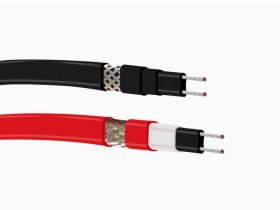Self-regulating heating cable
The Self-Regulating Heating Cable: Key to Effective Defrosting
Discover its technology, which provides an ideal solution for defrosting and heating pipes. This type, with its automatic operation, significantly contributes to energy efficiency and the prevention of damage caused by frost.
Application Possibilities and Features
Its design allows it to be cut at any point without interfering with its operation. It can be used for pipe heating, defrosting gutters and water pipes, and protecting critical areas where heat control is essential.
Applications
- Water pipes: Protecting property water supply systems from freezing.
- Gutters: Prevent ice buildup that can damage gutter systems.
- Industrial and Food Industry Pipes: Ensuring the continuity of production processes.
- Agricultural areas: Protection of water supply systems for farms and riding stables.
- Heat pump drip tray heating
Technical Information and Energy Management
- Energy efficiency: Its low energy consumption means significant savings for households, especially during the cold months.
- Automatic Power Control: Cable thermal sensors detect changes in ambient temperature and control power accordingly.
Environmental and Sustainable Use
The product's UV-stable material guarantees long-term use and protection against environmental factors. The cable's flexibility and durability make it a perfect choice for any location where there is a risk of freezing.
Summary
Self-regulating technology is a highly effective choice for all types of pipe heating and defrosting applications. This technology not only increases the safety and efficiency of systems, but also results in significant cost savings for users.
Further Information and Expert Assistance
For further details and personalized advice, visit our website: Dimat Self-Regulating Heating Cable or contact our experts.








